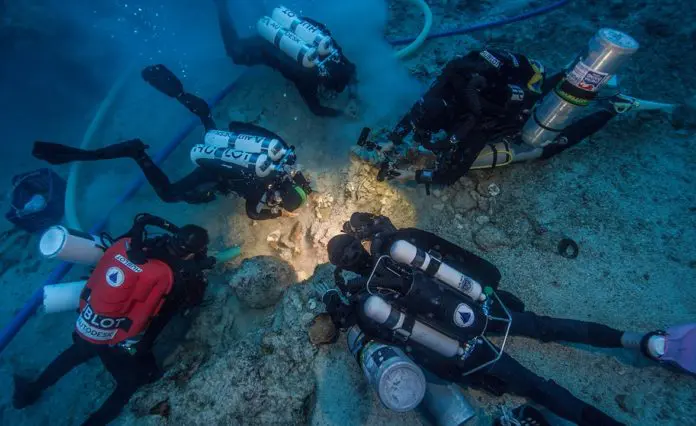Underwater archaeologists have found a human skeleton on an ancient Greek shipwreck in the Aegean Sea off the island of Antikythera.
This is a big deal, because it’s the first skeleton found where the full might of DNA analysis can be brought to bear to illuminate how people lived over two millennia ago (once the Greek government approves the analysis), according to the Woods Hole Oceanographic Institution (WHOI).
Among the remains found were the skull, arm and leg bones and ribs. The rest of the skeleton is scheduled for excavation later.
WHOI Marine Archaeologist Brendan Foley says:
“Archaeologists study the human past through the objects our ancestors created. With the Antikythera Shipwreck, we can now connect directly with this person who sailed and died aboard the Antikythera ship.”
The skeleton was discovered on August 31. Greek Ancient DNA expert Dr. Hannes Schroeder, from the Natural History Museum of Denmark in Copenhagen who will conduct the analysis, says:
“Against all odds, the bones survived over 2,000 years at the bottom of the sea and they appear to be in fairly good condition, which is incredible.”
Since its discovery over a century ago, the Antikythera Shipwreck has yielded a host of clues regarding how people lived during the time of its sinking. For more information, including a 3D image of the actual skeleton, check out the WHOI website at whoi.edu.


